Sustainable Hydroponic Farming Methods for Beginners
|
|
This site contains product affiliate links. We may receive a commission if you make a purchase after clicking on one of these links.
|
|
Hydroponic Growing Medium for Beginners
Hydroponic growing medium is a substrate that helps support the growth of plants in a hydroponic system. Unlike traditional soil-based gardening, hydroponics uses water-based solutions to deliver nutrients directly to the plant's roots. As a result, the growing medium in a hydroponic system plays a crucial role in providing stability and support to the plants.
There are several types of hydroponic growing mediums available on the market, each with its own unique properties and benefits. Some of the most common types include:
1. Rockwool:
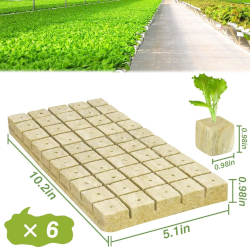
Rockwool is a popular choice for hydroponic growers due to its excellent water and nutrient retention properties. Made from spun volcanic rock fibers, rockwool provides a stable and sterile environment for plants to thrive. It is also reusable, making it a cost-effective option for long-term use.
Look at Rockwool options
Many different types of plants can thrive in rockwool, as long as they are given the proper nutrients and care. Here are some plants that grow particularly well in rockwool hydroponic systems:
- Leafy greens: Plants like lettuce, spinach, kale, and Swiss chard are all great options for growing in rockwool. These plants have shallow roots and do well in the moist and aerated conditions provided by the rockwool. Leafy greens also tend to have fast growth rates, making them ideal for hydroponic systems.
- Herbs: Herbs like basil, cilantro, parsley, and mint are well-suited for rockwool growing media. These plants thrive in well-drained, aerated growing environments and can produce a bountiful harvest in a hydroponic system. Herbs also have a compact growth habit, making them perfect for small spaces.
- Strawberries: Strawberries are a popular choice for hydroponic growers, and they do particularly well in rockwool. The porous nature of rockwool helps to retain moisture around the roots of the plants, which is crucial for producing juicy and flavorful berries. Strawberries require good drainage and airflow around their roots, both of which are provided by rockwool.
- Tomatoes: Tomatoes are a bit more demanding when it comes to growing conditions, but they can still thrive in rockwool with the right care. Tomatoes require good drainage, aeration, and plenty of nutrients to produce healthy fruits. Rockwool provides all of these factors, making it an excellent choice for growing tomatoes in a hydroponic system.
- Peppers: Peppers are another popular choice for hydroponic growers, and they grow well in rockwool. Peppers need a well-drained growing medium that provides good support for their roots, which is exactly what rockwool offers. Peppers also require plenty of nutrients to produce large and flavorful fruits, which can be easily provided in a hydroponic system.
Look at Rockwool options
2. Perlite:
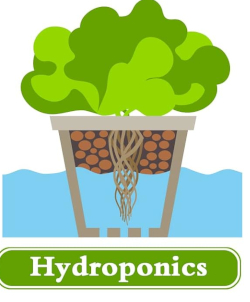
Perlite is a lightweight, volcanic mineral that is commonly used in hydroponic systems to improve aeration and drainage. Its porous structure helps to prevent waterlogging and allows air to reach the plant's roots. Perlite is also pH neutral, making it suitable for a wide range of crops.
Look at Perlite options
Some plants that grow particularly well in perlite hydroponic systems.
- Lettuce: Lettuce is an easy and popular crop to grow in perlite. Its shallow root system benefits from the excellent aeration and drainage that perlite provides. Lettuce also grows quickly in hydroponic systems, making it a great choice for beginners or those looking for a fast-growing crop.
- Herbs: Many herbs thrive in perlite hydroponic systems, including basil, cilantro, and parsley. These plants require good drainage and ample oxygen to their roots, both of which perlite provides. Herbs are also known for their intense flavors when grown hydroponically, making them a favorite among home growers.
- Tomatoes: Tomatoes are another crop that does well in perlite hydroponic systems. They require good drainage to prevent root rot and thrive in the well-aerated environment that perlite provides. Tomatoes grown hydroponically also tend to produce higher yields and quality fruits compared to traditional soil-grown plants.
- Peppers: Peppers, such as bell peppers and chili peppers, are excellent candidates for perlite hydroponic growing. These plants have a shallow root system that benefits from perlite's airy texture. Peppers also thrive in the stable nutrient solution provided by hydroponic systems, leading to healthy growth and abundant fruit production.
- Cucumbers: Cucumbers are a popular crop for hydroponic growing, and they grow particularly well in perlite. Their vigorous root system benefits from the excellent aeration and drainage properties of perlite, leading to healthy vines and abundant fruit production. Cucumbers grown hydroponically also tend to be disease-resistant and produce higher yields compared to soil-grown plants.
Look at Perlite options
3. Coconut coir:
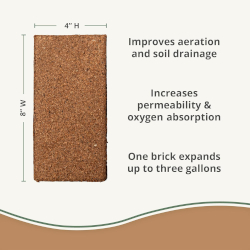
Coconut coir, also known as coco peat, is a byproduct of coconut husks and is a sustainable alternative to traditional growing mediums. It has excellent water retention properties and provides a fibrous structure for plant roots to anchor onto. Coconut coir is also pH stable and can be reused multiple times.
Look at Coconut coir options
Here are some plants that grow particularly well in coconut coir:
- Herbs: Herbs such as basil, cilantro, parsley, and mint thrive in coconut coir due to its ability to retain water and provide good aeration to the roots. These plants require a well-draining medium to prevent root rot, and coconut coir fits the bill perfectly.
- Lettuce and leafy greens: Leafy greens like lettuce, spinach, kale, and Swiss chard do well in coconut coir as it provides ample support for their shallow root systems. The water retention properties of coconut coir ensure that these plants receive a consistent water supply, leading to healthy and robust growth.
- Tomatoes: Tomatoes are another plant that performs exceptionally well in coconut coir. The medium provides the necessary support for the roots to develop a strong root system, while also maintaining a good balance of water and air for optimal growth. Tomatoes grown in coconut coir tend to produce higher yields and better fruit quality.
- Peppers: Peppers, whether sweet or hot varieties, thrive in coconut coir due to its excellent water retention capabilities. The medium helps to prevent overwatering, which can lead to root rot in pepper plants. In addition, coconut coir provides good aeration, allowing the roots to breathe and uptake nutrients effectively.
- Cucumbers: Cucumbers are well-suited to growing in coconut coir as they require a consistent moisture level for optimal growth. The medium provides a stable water supply, preventing the soil from drying out and causing stress to the plants. Cucumbers grown in coconut coir tend to produce better-tasting fruits with fewer diseases.
Look at Coconut coir options
4. Clay pellets:
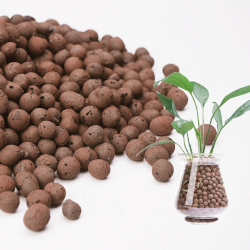
Clay pellets, also known as expanded clay pebbles, are lightweight and provide good drainage in hydroponic systems. They are pH neutral and do not compact over time, making them a durable and long-lasting growing medium. Clay pellets are ideal for plants that require good aeration, such as orchids and herbs.
Look at Clay pellets options
Some plants that grow well in clay pellets hydroponic growing medium include:
- Lettuce: Lettuce is a popular choice for hydroponic gardening, and it grows exceptionally well in clay pellets. This leafy green vegetable enjoys the excellent aeration and drainage that clay pellets provide, resulting in healthy and vibrant growth.
- Herbs: Herbs such as basil, cilantro, and parsley are well-suited for growing in clay pellets. These plants have shallow root systems that benefit from the stability and support offered by the pellets.
- Tomatoes: Tomatoes are another crop that thrives in clay pellets. With proper support and consistent watering, tomato plants can produce large, juicy fruits when grown in this medium.
- Peppers: Peppers, both sweet and hot varieties, are well-suited for clay pellets hydroponic systems. These plants require good drainage to prevent root rot, making clay pellets an ideal choice for their growth.
- Strawberries: Strawberries are a delicious and rewarding crop to grow in clay pellets. The plants enjoy the aeration and stability that the pellets provide, resulting in healthy foliage and abundant fruit production.
Look at Clay pellets options
5. Vermiculite:
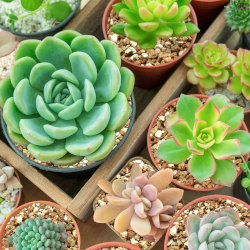
Vermiculite is a mineral that expands when heated, creating a lightweight and porous growing medium. It has excellent water retention properties and helps to maintain a stable moisture level in hydroponic systems. Vermiculite is also sterile and free from pests and diseases.
Look at Vermiculite options
Here are some plants that do well in vermiculite:
- Leafy greens: Plants like lettuce, kale, spinach, and arugula grow well in vermiculite. These plants have shallow root systems and benefit from the moisture retention of vermiculite.
- Herbs: Herbs like basil, parsley, cilantro, and mint also thrive in vermiculite. These plants prefer well-draining soil, and vermiculite provides the right balance of moisture and air for their root systems to grow.
- Peppers: Bell peppers, chili peppers, and other pepper varieties grow well in vermiculite. They require good drainage to prevent root rot, and vermiculite helps to achieve this by providing optimal aeration.
- Tomatoes: Tomatoes are a popular choice for hydroponic growing, and vermiculite is an excellent medium for growing them. Vermiculite helps to maintain consistent moisture levels, which is crucial for healthy tomato plants.
- Strawberries: Strawberries are another plant that grows well in vermiculite. They prefer a well-aerated growing medium to prevent root diseases, and vermiculite provides the ideal conditions for their growth.
Look at Vermiculite options
Ultimately, the choice of hydroponic growing medium will depend on the specific needs of the plants being grown and the preferences of the grower. Each type of growing medium has its own unique characteristics and benefits, so it is important to consider factors such as water retention, aeration, and pH stability when selecting the right substrate for a hydroponic system.
In conclusion, hydroponic growing medium is an essential component of a successful hydroponic system. By providing stability, support, and essential nutrients to plants, the right growing medium can help to ensure healthy growth and high yields in a hydroponic garden. Whether using rockwool, perlite, coconut coir, clay pellets, or vermiculite, choosing the right growing medium is key to achieving optimum results in hydroponics.
|




